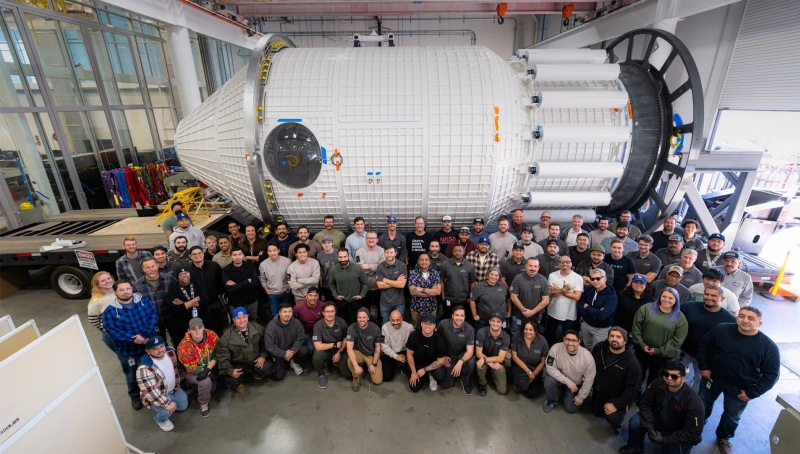Recent qualification tests of the inhabited module of the first private commercial commercial orbital station Haven-1 California startup VAST Space revealed the problems of the design, which for a year or so detained its launch into space. High pressure tests showed the presence of leakage in an unknown place. Thus, the launch of the module to orbit planned in August 2025 is transferred to the spring of 2026, but even then competitors will remain behind.

The first Haven-1 module. Image Source: Vast Space
VAST SPACE began the production of the HAVEN-1 qualification product in its headquarters in Long Beach in July 2024, and last month she transported a half-collapsed module to her testing stand in Mohava, California. There, the module was subjected to a series of tests to verify structural integrity. The tests are still ongoing, but the last of them was a serious obstacle to continuing the development of the module.
Using dry nitrogen, the company twice increased the pressure in the module on the test booth-the first time by 5 hours, and the second-by 48 hours. According to the developer, the pressure sensors in the Haven-1 module showed a “insignificant” leak, which, nevertheless, which, nevertheless, is, which, nevertheless, is I exceeded the NASA requirements to complete the qualification of the manned spacecraft as safe.
The trials have not yet been completed, but the company will have to wait for the sending of the Haven-1 module to orbit. An analysis of the situation and new tests will follow, which will create a safe module and, with the beginning of 2026, begin the next check of the already flight unit. In April 2026, the company expects to be with the Haven-1 module already next to the launch pad and begin its integration into the missile. The launch is scheduled for May 2026 on the Falcon 9 rocket SpaceX.
Now VAST Space is looking for four volunteers for sending for two weeks to an experimental station in order to check its work in practice. Sending is financed by the company itself, and the crew will be delivered to the SpaceX Dragon module. The fast implementation and verification of the Haven-1 project in space will become a trump card in the hands of the company, when later in 2026 NASA will choose a partner to create a commercial station in return for the ISS, which is expected after 2030.

Visualization of the Haven-2 station in full configuration
The VAST Space company at this moment will be the only one that was really able to bring the orbital module into space. But will it be able to eliminate all the problems that usually accompany all the undertakings? If she can withstand the promised pace, then in 2028 she will begin to bring the second generation modules into space and build a new station for the replacement of the ISS, which will even have artificial gravity by 2032. But this will be a completely different story.